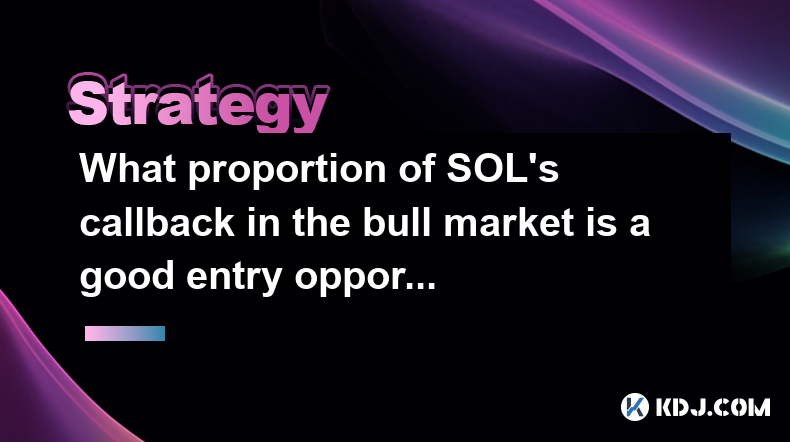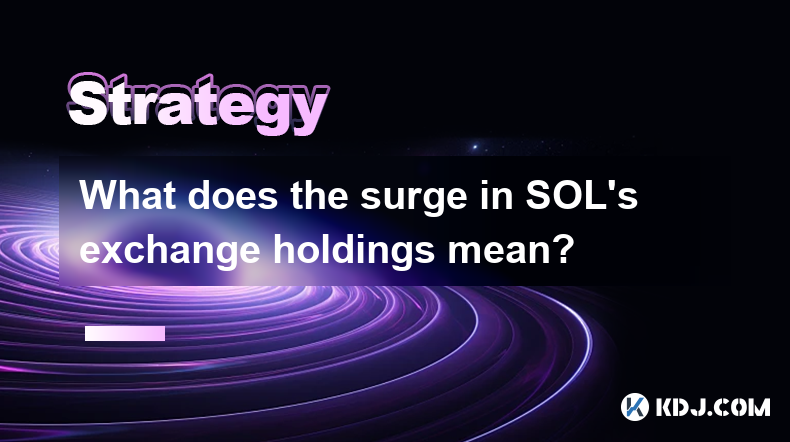-
 Bitcoin
Bitcoin $88,555.6766
1.18% -
 Ethereum
Ethereum $1,626.4043
-1.22% -
 Tether USDt
Tether USDt $0.9998
-0.01% -
 XRP
XRP $2.1018
-1.27% -
 BNB
BNB $605.8750
0.04% -
 Solana
Solana $140.3422
0.04% -
 USDC
USDC $0.9999
0.00% -
 Dogecoin
Dogecoin $0.1643
1.27% -
 TRON
TRON $0.2481
1.05% -
 Cardano
Cardano $0.6359
-1.63% -
 Chainlink
Chainlink $13.3216
-2.53% -
 UNUS SED LEO
UNUS SED LEO $9.1797
-2.79% -
 Avalanche
Avalanche $20.3681
-2.52% -
 Stellar
Stellar $0.2473
-4.43% -
 Sui
Sui $2.3043
2.50% -
 Shiba Inu
Shiba Inu $0.0...01257
-1.15% -
 Toncoin
Toncoin $2.9429
-3.48% -
 Hedera
Hedera $0.1738
0.16% -
 Bitcoin Cash
Bitcoin Cash $347.0587
1.49% -
 Hyperliquid
Hyperliquid $18.2576
-0.35% -
 Litecoin
Litecoin $79.8456
-0.89% -
 Polkadot
Polkadot $3.7809
-4.73% -
 Dai
Dai $0.9999
-0.01% -
 Bitget Token
Bitget Token $4.4439
-0.50% -
 Ethena USDe
Ethena USDe $0.9991
-0.01% -
 Pi
Pi $0.6313
-0.96% -
 Monero
Monero $216.2035
0.57% -
 Pepe
Pepe $0.0...08138
3.46% -
 Uniswap
Uniswap $5.3889
-1.68% -
 OKB
OKB $50.9281
-0.23%
How to identify and utilize market reversal signals in Ethereum trading?
By examining market reversal patterns, such as double tops/bottoms and head and shoulders formations, traders can anticipate potential price movements and adjust their strategies accordingly.
Feb 25, 2025 at 04:12 pm

Key Points:
- Understand market reversal patterns
- Utilize technical analysis indicators
- Consider market sentiment and news events
- Apply risk management strategies
Identifying Market Reversal Signals
Double Top and Bottom:
- Double top or bottom formations identify potential price reversals.
- A double top occurs when the price forms two peaks, followed by a dip below the neckline. A double bottom forms similarly with two lows and a peak above the neckline.
- These patterns suggest indecision and a possible return to the previous trend.
Head and Shoulders:
- A head and shoulders pattern consists of three consecutive peaks, with the middle peak (the "head") being the highest.
- Neckline support and resistance lines are drawn at the lows of the two shoulders.
- A breakout below the neckline confirms a bearish reversal.
Failed Breakouts:
- Failed breakouts occur when a price crosses a support or resistance level and subsequently reverses.
- This indicates that the trend may be losing momentum and potentially reversing.
Golden/Death Crosses:
- Golden MACD crosses occur when the MACD line crosses above the signal line, indicating a possible bullish reversal.
- Death crosses occur when the MACD line crosses below the signal line, signaling potential bearishness.
Stochastic Oscillator:
- The Stochastic Oscillator measures market momentum and can identify oversold or overbought conditions.
- A signal line crossing above 80% suggests overbought conditions and a potential bearish reversal.
- Crossing below 20% indicates oversold conditions and a possible bullish reversal.
Relative Strength Index (RSI):
- The RSI ranges from 0 to 100 and measures price strength.
- A reading above 70 indicates an overbought condition, while below 30 indicates an oversold condition.
- Divergence between the RSI and the price can signal potential reversals.
Utilizing Market Reversal Signals
Set Stop-Loss Orders:
- Place stop-loss orders below support levels (for bullish reversals) or above resistance levels (for bearish reversals) to minimize losses in case the reversal fails.
Manage Risk Appropriately:
- Determine your risk tolerance and always trade with a margin of error.
- Use leverage cautiously and consider trailing stop-loss orders to protect your profits.
Combine Indicators:
- Avoid relying on any single signal. Combine multiple indicators to corroborate potential reversals and improve accuracy.
Consider Market Sentiment:
- Take into account market sentiment and news events that may influence price movements.
- Major geopolitical events, economic data releases, and industry-specific news can trigger market reversals.
Patience and Discipline:
- Be patient and wait for clear confirmations before executing trades based on reversal signals.
- Avoid jumping in prematurely and maintain stop-losses to protect against false signals.
FAQs
Q: What are the most reliable market reversal signals?
A: While no single signal is foolproof, double tops and bottoms, head and shoulders, and golden/death crosses are generally considered reliable.
Q: Can market reversals be predicted with certainty?
A: No, market reversals cannot be predicted with absolute certainty. However, understanding reversal patterns, technical analysis, and market sentiment can increase the likelihood of identifying potential reversals.
Q: How can I minimize losses when trading reversals?
A: Implement strict risk management strategies, such as using trailing stop-loss orders, managing leverage wisely, and diversifying your portfolio.
Q: What is the best timeframe for analyzing market reversal signals?
A: The optimal timeframe depends on your trading strategy and risk appetite. However, longer timeframes (e.g., daily or weekly charts) provide a more reliable perspective.
Q: How can I avoid falling prey to false reversal signals?
A: Combine multiple indicators, consider market sentiment, and be patient. Avoid chasing false signals and always use stop-losses to limit potential losses.
Disclaimer:info@kdj.com
The information provided is not trading advice. kdj.com does not assume any responsibility for any investments made based on the information provided in this article. Cryptocurrencies are highly volatile and it is highly recommended that you invest with caution after thorough research!
If you believe that the content used on this website infringes your copyright, please contact us immediately (info@kdj.com) and we will delete it promptly.
- U.S. Digital Asset Firms Are Reportedly Considering Applying for Bank Charters and Licenses
- 2025-04-22 15:40:12
- OM Slides Deeper as Massive Token Burn Falls Flat
- 2025-04-22 15:40:12
- Ethereum Crashes, Its Share of the Overall Virtual Asset Market Fell Below 7%
- 2025-04-22 15:35:12
- Dogecoin Community Celebrates Dogeday 4/20, Buoyed by ETF Filing Buzz
- 2025-04-22 15:35:12
- ZetaChain Integrates Arbitrum to Offer Streamlined Universal App Usage
- 2025-04-22 15:30:12
- Deutsche Bank and Standard Chartered Are Expanding Their Crypto Operations in the United States
- 2025-04-22 15:30:12
Related knowledge

How to use trading volume to determine the buying and selling timing of BCH?
Apr 22,2025 at 04:14pm
Trading volume is a critical indicator that traders use to gauge the strength and direction of market trends, and it can be particularly useful when determining the buying and selling timing of Bitcoin Cash (BCH). By analyzing the trading volume, investors can gain insights into the market sentiment and make more informed decisions about when to enter o...

What proportion of SOL's callback in the bull market is a good entry opportunity?
Apr 22,2025 at 03:43pm
The question of what proportion of SOL's callback in a bull market represents a good entry opportunity is a nuanced one, requiring a deep dive into market dynamics, historical data, and risk management strategies. Let's explore this topic in detail. Understanding SOL and Bull MarketsSolana (SOL) is a high-performance blockchain platform known for its fa...

Can BCH's Willy indicator be bottomed out in the oversold area?
Apr 22,2025 at 02:56pm
Understanding the Willy IndicatorThe Willy indicator, also known as the Willy ratio, is a technical analysis tool used in the cryptocurrency market to assess the potential for a price reversal. It is calculated by dividing the current price of a cryptocurrency by its 200-day moving average. When the Willy indicator falls into the oversold area, it sugge...

What does the surge in SOL's exchange holdings mean?
Apr 22,2025 at 04:07pm
The recent surge in SOL's exchange holdings has sparked considerable interest and debate within the cryptocurrency community. SOL, the native token of the Solana blockchain, has seen a notable increase in the amount of tokens held on various cryptocurrency exchanges. This phenomenon can have several implications for the token's price, market sentiment, ...

What to do if SHIB's HODL wave indicator shows loose chips?
Apr 21,2025 at 03:07pm
If the SHIB's HODL wave indicator shows loose chips, it suggests that a significant portion of the SHIB holders are selling their tokens, potentially leading to increased volatility and a possible price drop. Understanding how to navigate this situation is crucial for any SHIB investor. This article will guide you through the steps to take when you noti...

Is it a risk that SHIB's derivatives position is 3 times that of the spot?
Apr 20,2025 at 12:35am
Is it a risk that SHIB's derivatives position is 3 times that of the spot? The cryptocurrency market is known for its volatility and high-risk nature, and Shiba Inu (SHIB) is no exception. One of the metrics that traders and investors closely monitor is the ratio of derivatives to spot positions. SHIB's derivatives position being three times that of the...

How to use trading volume to determine the buying and selling timing of BCH?
Apr 22,2025 at 04:14pm
Trading volume is a critical indicator that traders use to gauge the strength and direction of market trends, and it can be particularly useful when determining the buying and selling timing of Bitcoin Cash (BCH). By analyzing the trading volume, investors can gain insights into the market sentiment and make more informed decisions about when to enter o...

What proportion of SOL's callback in the bull market is a good entry opportunity?
Apr 22,2025 at 03:43pm
The question of what proportion of SOL's callback in a bull market represents a good entry opportunity is a nuanced one, requiring a deep dive into market dynamics, historical data, and risk management strategies. Let's explore this topic in detail. Understanding SOL and Bull MarketsSolana (SOL) is a high-performance blockchain platform known for its fa...

Can BCH's Willy indicator be bottomed out in the oversold area?
Apr 22,2025 at 02:56pm
Understanding the Willy IndicatorThe Willy indicator, also known as the Willy ratio, is a technical analysis tool used in the cryptocurrency market to assess the potential for a price reversal. It is calculated by dividing the current price of a cryptocurrency by its 200-day moving average. When the Willy indicator falls into the oversold area, it sugge...

What does the surge in SOL's exchange holdings mean?
Apr 22,2025 at 04:07pm
The recent surge in SOL's exchange holdings has sparked considerable interest and debate within the cryptocurrency community. SOL, the native token of the Solana blockchain, has seen a notable increase in the amount of tokens held on various cryptocurrency exchanges. This phenomenon can have several implications for the token's price, market sentiment, ...

What to do if SHIB's HODL wave indicator shows loose chips?
Apr 21,2025 at 03:07pm
If the SHIB's HODL wave indicator shows loose chips, it suggests that a significant portion of the SHIB holders are selling their tokens, potentially leading to increased volatility and a possible price drop. Understanding how to navigate this situation is crucial for any SHIB investor. This article will guide you through the steps to take when you noti...

Is it a risk that SHIB's derivatives position is 3 times that of the spot?
Apr 20,2025 at 12:35am
Is it a risk that SHIB's derivatives position is 3 times that of the spot? The cryptocurrency market is known for its volatility and high-risk nature, and Shiba Inu (SHIB) is no exception. One of the metrics that traders and investors closely monitor is the ratio of derivatives to spot positions. SHIB's derivatives position being three times that of the...
See all articles























































































